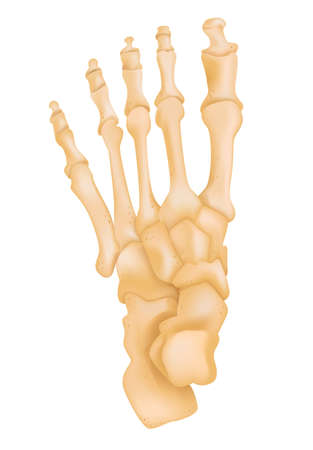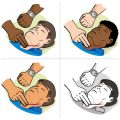Overview of Spinal Cord Injuries in the United States
Spinal cord injuries (SCI) are life-changing events that can impact people of all ages and backgrounds in the United States. Understanding who is affected, how these injuries happen, and the latest trends is crucial for early intervention and effective acute management, which set the stage for successful rehabilitation.
Epidemiology of SCI in the U.S.
Each year, thousands of Americans experience a spinal cord injury. According to recent data from the National Spinal Cord Injury Statistical Center (NSCISC), there are approximately 17,000 new cases annually in the U.S., not including those who die at the scene of an accident. The number of people currently living with SCI in America is estimated to be between 250,000 and 368,000.
Common Causes of Spinal Cord Injuries
The causes of SCI in the U.S. reflect both everyday risks and unique aspects of American life. Here’s a breakdown of the most common causes:
| Cause | Percentage (%) |
|---|---|
| Motor Vehicle Accidents | 38% |
| Falls | 32% |
| Violence (mainly gunshot wounds) | 14% |
| Sports and Recreation Activities | 8% |
| Other/Unknown | 8% |
This data highlights why prevention efforts often focus on road safety, fall prevention for older adults, and violence reduction programs across communities.
Demographic Trends in SCI
Certain groups in the U.S. are more likely to sustain a spinal cord injury than others:
- Age: Young adults (ages 16-30) are at highest risk, largely due to motor vehicle crashes and sports injuries. However, falls among older adults (over 65) have become a leading cause as the population ages.
- Gender: About 78% of new SCI cases occur in males, reflecting higher involvement in risk-related activities.
- Race/Ethnicity: SCI occurs across all racial and ethnic groups, but studies show higher rates among non-Hispanic whites and African Americans compared to other populations.
How Epidemiology Shapes Acute Care and Rehabilitation Strategies
The patterns seen in how, where, and to whom SCIs happen help hospitals and rehab teams design care that meets real-life needs. For example:
- Younger patients injured in car accidents may need different psychological support than older adults who fell at home.
- The rise in firearm-related SCIs means trauma centers must be ready for complex injuries beyond just bone or nerve damage.
- Diverse communities may require language services or culturally sensitive care plans during acute management and throughout rehabilitation.
The Big Picture: Early Intervention Matters
The first hours and days after a spinal cord injury are critical for limiting long-term disability. Knowing who is at risk and how injuries typically happen helps emergency responders and medical teams act quickly—stabilizing patients, preventing further injury, and starting early rehab planning that gives every person the best possible chance at recovery.
2. Pre-hospital and Emergency Department Management
First Responders: Setting the Stage for Recovery
When someone experiences a spinal cord injury (SCI), every second counts. First responders—such as EMTs, paramedics, and firefighters—are trained to act quickly and follow specific protocols designed to protect the spine and prevent further damage. Their actions can significantly affect a patient’s recovery journey.
Immobilization Techniques
One of the first steps in managing a suspected SCI is immobilization. This means keeping the head, neck, and back as still as possible to avoid additional injury. In the U.S., first responders use several key tools and techniques:
| Technique/Tool | Purpose | Typical Use |
|---|---|---|
| Cervical Collar (C-collar) | Keeps the neck stable | Placed on any trauma patient with possible neck injury |
| Backboard or Scoop Stretcher | Keeps the entire spine aligned during movement | Used when moving patients from accident scenes to ambulances |
| Log Roll Maneuver | Moves patients without twisting the spine | For transferring onto stretchers or beds, always done by a team |
Rapid Assessment: Identifying Critical Needs Fast
Quick assessment is crucial. First responders look for signs of spinal cord injury, such as loss of movement or sensation below the site of trauma, severe pain, or obvious deformities. They also check vital signs and manage other life-threatening conditions like bleeding or airway problems. Communication with emergency departments starts early, so hospitals can prepare specialized teams in advance.
The Emergency Department: Next Steps in Acute Management
Once at the hospital, trauma teams continue with immediate evaluation and care. Key priorities include:
- Maintaining immobilization: The patient remains stabilized until imaging confirms there’s no spinal injury.
- Advanced Imaging: X-rays, CT scans, or MRIs are used to pinpoint the exact nature of the injury.
- Stabilizing vital functions: Breathing support, blood pressure management, and pain control are all essential.
- Early specialist involvement: Neurosurgeons or orthopedic spine surgeons are often consulted right away.
- Planning for transfer if needed: If a hospital isn’t equipped to handle complex SCIs, arrangements are made for rapid transport to specialized centers.
The Importance of Timely Transfer to Specialized Centers
Research shows that patients who receive care at dedicated spinal injury centers have better outcomes. These facilities offer advanced surgical options, intensive rehabilitation programs, and experienced multidisciplinary teams. That’s why prompt identification and transfer are emphasized at every step—from roadside response to emergency room care.

3. Acute Medical and Surgical Interventions
Initial Medical Stabilization: The First Critical Steps
When someone experiences a spinal cord injury (SCI), quick and effective care in the first hours is essential. Emergency teams in the United States follow evidence-based protocols to keep the patient stable and prevent further damage. Heres what typically happens during initial stabilization:
| Step | What It Means |
|---|---|
| Airway, Breathing, Circulation (ABCs) | Ensuring the person can breathe, has a steady heartbeat, and maintains good blood flow. |
| Spinal Immobilization | Using a neck collar and backboard to prevent the spine from moving during transport. |
| Neurological Assessment | Checking movement, sensation, and reflexes to understand the extent of injury. |
| IV Fluids & Medication | Giving fluids and medications to maintain blood pressure and reduce swelling around the spinal cord. |
Surgical Options: When Is Surgery Needed?
Surgery is often considered when there is evidence that pressure on the spinal cord might worsen neurologic damage or if there are unstable fractures. The main goals of surgery are:
- Relieve pressure on the spinal cord (decompression)
- Stabilize broken bones in the spine (fixation using rods, screws, or plates)
- Remove bone fragments or foreign objects if needed
The decision for surgery depends on the type of injury, location, and overall health of the patient. In American hospitals, a multidisciplinary team—including trauma surgeons, neurosurgeons, and rehabilitation specialists—work together to determine the best approach.
Prevention of Secondary Complications
A big part of early intervention is preventing complications that can develop after a spinal cord injury. These may include:
| Complication | Prevention Strategies |
|---|---|
| Pneumonia | Frequent repositioning, breathing exercises, and sometimes ventilator support. |
| Pressure Ulcers (Bedsores) | Cushioning, regular turning schedules, and skin checks. |
| Blood Clots (Deep Vein Thrombosis) | Compression stockings, blood thinners, and early gentle movement as allowed. |
| Urinary Tract Infections | Careful bladder management using catheters with sterile technique. |
Strategies to Minimize Further Neurologic Damage
The care team aims to stop any additional harm to the spinal cord by:
- Avoiding unnecessary movement of the spine at all times
- Monitoring blood pressure closely to ensure good spinal cord blood flow
- Using medications when appropriate to limit inflammation or swelling around injured nerves
- Starting rehabilitation therapies as soon as medically safe to preserve muscle strength and joint flexibility
The Role of Early Rehabilitation Collaboration
The acute phase sets the stage for future recovery. Early involvement of physical therapists and rehabilitation specialists helps create a smooth transition from hospital care to rehab programs. This teamwork gives patients the best chance for regaining function and independence after a spinal cord injury.
4. Interdisciplinary Approach and Family Involvement
The Power of a Multidisciplinary Team in Spinal Cord Injury Care
When someone experiences a spinal cord injury (SCI), it takes more than one expert to provide the best care. In the United States, a multidisciplinary team approach is essential from day one. This team brings together professionals from different backgrounds, each with unique skills, to support patients and their families throughout the acute phase and beyond.
Key Members of the Acute SCI Care Team
| Role | Main Responsibilities |
|---|---|
| Physicians (including trauma surgeons, neurologists, physiatrists) | Diagnose injury, oversee medical stability, coordinate overall treatment plan |
| Nurses | Provide round-the-clock monitoring, manage medications, educate patients and families on daily care needs |
| Physical Therapists (PTs) | Begin early mobility exercises, prevent complications like pressure sores or joint stiffness, encourage safe movement |
| Occupational Therapists (OTs) | Help patients relearn daily tasks, assess adaptive equipment needs for independence |
| Social Workers | Offer emotional support, connect families to resources, help navigate insurance and community programs |
| Case Managers & Discharge Planners | Coordinate care transitions, plan for rehabilitation or home care after hospital discharge |
Culturally Sensitive Family Engagement: Meeting Families Where They Are
In the U.S., families play a crucial role in recovery after SCI. Engaging them early and respectfully can make a big difference. Every family has its own culture, traditions, beliefs, and ways of coping with health challenges. Here are some culturally sensitive strategies to involve families effectively:
- Open Communication: Use plain language and avoid medical jargon. Ask about the familys preferred language and offer interpreter services if needed.
- Respect Beliefs: Be mindful of religious or cultural practices that may affect care decisions or daily routines.
- Personalized Education: Provide written materials or videos that reflect diverse backgrounds. Encourage questions and invite family members to participate in bedside teaching sessions.
- Acknowledge Emotions: Recognize that adjustment takes time and feelings of fear or grief are normal. Social workers can offer counseling or connect families with support groups.
- Collaborative Planning: Involve families in setting goals for rehabilitation and discharge planning to ensure that care fits their values and resources.
Together Toward Better Outcomes
An interdisciplinary approach combined with culturally sensitive family involvement sets a strong foundation for successful rehabilitation after spinal cord injury. When everyone works together—patients, families, and professionals—the path forward is clearer and more hopeful.
5. Transition to Rehabilitation and Early Goal Setting
Understanding the Shift from Acute Care to Rehabilitation
After a spinal cord injury (SCI), early intervention in the hospital is crucial, but the transition from acute care to rehabilitation marks an important new phase. This process usually begins once a patient’s condition is medically stable. In the United States, rehabilitation hospitals and specialized centers work closely with acute care teams to ensure a smooth handoff. Case managers, physical therapists, occupational therapists, nurses, and doctors collaborate to create a personalized plan for each patient. The focus shifts from immediate medical stabilization to maximizing function, independence, and quality of life.
The Importance of Early Therapy Interventions
Early therapy after an SCI has been shown to improve outcomes significantly. Therapists may start working with patients even while they are still in the ICU or step-down unit, using gentle range-of-motion exercises and mobility training as soon as it is safe. Early interventions help prevent complications like joint stiffness, muscle weakness, and pressure sores. They also provide emotional support and education for both patients and families during this challenging time.
Examples of Early Therapy Interventions
| Type of Intervention | Description | When Initiated |
|---|---|---|
| Passive Range of Motion | Therapist moves limbs to keep joints flexible | Within days after stabilization |
| Positioning | Proper body alignment to prevent pressure injuries | Immediately post-injury |
| Education Sessions | Explaining SCI effects and care needs to families | Soon after admission |
| Sitting Balance Training | Practicing upright sitting with support as tolerated | As soon as medically safe |
Setting Patient-Centered Goals in the American Context
In American rehabilitation settings, goal-setting is highly collaborative. Patients and their families are encouraged to participate in creating short-term and long-term goals that reflect what matters most to them—like returning home, going back to work or school, or participating in community activities. Therapists use these goals to design a tailored treatment program that addresses unique needs and personal aspirations.
Sample Patient-Centered Goals Table
| Goal Area | Example Short-Term Goal | Example Long-Term Goal |
|---|---|---|
| Mobility | Sit independently for 10 minutes by week 2 of rehab stay | Transfer safely from bed to wheelchair without assistance by discharge date |
| Self-Care | Brush teeth using adaptive equipment within one week of starting rehab | Bathe and dress independently before returning home |
| Psycho-social Wellbeing | Attend at least one peer support group session per week during inpatient stay | Create a plan for ongoing counseling or peer mentoring after discharge |
| Community Reintegration | Create a list of transportation options available in the local area within two weeks of rehab start date | Use public transportation or paratransit service independently by three months post-discharge |
Preparing for Community Reintegration in the US System
A key part of rehabilitation is helping patients prepare for life outside the hospital. In the American healthcare system, discharge planning starts early. Social workers and case managers help identify resources such as outpatient therapy, home modifications, accessible transportation, and community programs. Training might include practicing wheelchair skills on ramps and curbs or learning how to access community services like vocational rehab or adaptive sports leagues. Family education is essential so caregivers feel confident supporting their loved one at home.
Main Steps for Community Reintegration Support in the US:
| Step | Description/Examples |
|---|---|
| Discharge Planning Meeting | Create customized plans including follow-up appointments, equipment needs, and home setup |
| Connecting with Resources | Liaison with local support groups, vocational services, transportation providers |
| Home Evaluation | Therapist visits home (in-person or virtual) to recommend accessibility changes |
| Community Outings | Practice real-world tasks like shopping or using public transit before leaving inpatient rehab |
This comprehensive approach ensures that people with spinal cord injuries have the skills, confidence, and resources they need as they move forward into rehabilitation—and beyond.


